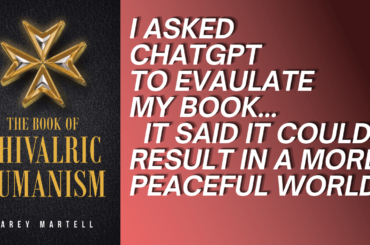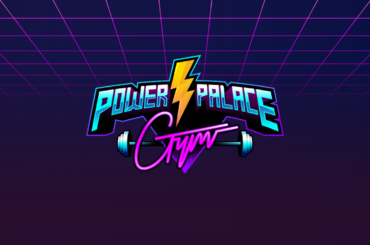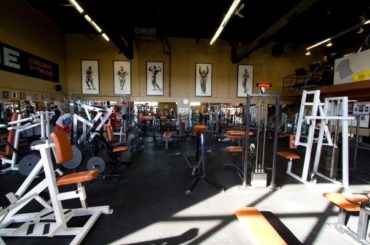Having Trouble Writing a Good TV Pitch? You’re Not Alone
During my time as Vice President of the Thunder TV division at Thunder Digital Media I listened to a lot of pitches for films and shows. While much of the material was created by YouTubers and indie film producers, there was some material produced by seasoned industry pros that I found to be just……well, not good would be the nicest way to put it.
Laughably bad would be my honest assessment. This was surprising to me, and unfortunate because some of their ideas might have been great but because they could not effectively communicate the idea to me I was unable to endorse it.
I’m back in a blogging mood today and got to thinking about some of the pitches I listened to. I wish some of the people who submitted had gotten some advice on how to craft a better pitch before they met with me, and regretted not having the time to sit down and write a guide people could use.
Given I have time now, I decided to put down into words how I think film / TV show pitches should be delivered. I could lecture on this at some length but decided I’d be more effective to give a step by step example using a fake project.
I could have invented some generic monomyth pitch material to write this article, but that would be boring. I have instead decided to use a pitch that I think people will pay attention to, which will make the instruction more effective.
So without any further rambling, I present to you my totally fake project Ghostbusters: West Coast.
What is your Pitch?
Your pitch is, fundamentally, the story you are telling. As you cannot show the finished product of what your film / TV show is going to look like, you instead must craft a series of images that can accompany the narrative you present during your pitch.
A pitch deck could consist of the following sections:
- Project Title
- Why Make This Project (Why does the market need your show? What evidence exists to suggest people want to see this thing?)
- Synopsis (What is the plot of the show?)
- Talent Overview (Who is going to star in this show? Why choose these actors?)
- Production Details (Where is this show going to be filmed at? Why there?)
- Run Through the Story (This is a series of storyboards that, accompanied by your oral narration during the pitch, explain to would-be producers / investors what events happen in the story of your show).
To create these pitch sections, you need to have a firm understanding of what your project is. This requires creating a treatment document. The Ghostbusters: West Coast treatment can be downloaded here for your review so you can familiarize yourself with how a treatment should be laid out.
I have embedded the full pitch presentation for the show on Slideshare and embedded into the page below for you to breeze through….
…however this presentation (like all proper pitches) is designed to be an aid to an oral presentation. Thus I am breaking down the slides to explain what the oral portion of the presentation would have been like, along with foot-notes for you to understand why certain things are being said.
This is the first slide, the Project Title slide. The important elements are to tell me the name of the show and who is producing it.
This is the second slide, the “Why” slide. The goal is to explain why anyone would want to watch this project. Some creators might think you want to go straight to the plot elements of your show, such as its synopsis, but I think it’s better to start out with an explanation of why anyone would want to watch your show. This is because if you don’t present this information before you dive into the plot, I will spend the entire time half-listening as I try to mentally figure out what demographics your show will appeal to.
Why the focus on who the show appeals to? It’s simple: Television is funded by advertisers. Advertisers want specific demographics. No matter what your show is about, if the target demographics of your show cannot be easily identified your show will not get produced because we won’t be able to sell advertisers on why they should purchase space during the program.
For the Ghostbusters: West Coast example I focused on demographics pulled from Facebook and Google that gives us a general idea of the age group and gender demographics of people who follow the Ghostbusters Facebook Pages. Furthermore by showing that Ghostbusters is a high volume search term on Google it gives us a general idea of how popular the franchise still is.
This is the third slide. This is where you give a brief overview of the plot elements of the show. The important parts are;
- The high-level concept: “The Next Generation of Ghostbusters“.
- What the show is: a comedy web series consisting of twenty-four episodes that can fit a one-hour time-slot if later repackaged for television broadcast.
- Unique elements: The show has some unique plot elements designed to add new dimensions to the franchise by exploring the negative consequences of the Ghostbusters’ celebrity and science behind their technology, which inspires a modern-day Cult of Gozer to emerge .
This is the fourth slide. This one details the Talent who will appear in the show and what character roles they will play.
These are not unknown individuals; as the next few slides detail, the social media following of each actor played a role in determining whether to cast them, as clearly understanding the following of an actor is now important to ensure the desired demographic for the show is reachable (you can data-mine the demographics of someone’s Facebook, YouTube or Twitter following to determine this).
The Talent are also known for producing comedy content and have the necessary acting background to carry the roles, which is also an important consideration for casting.
This is the ninth slide. It begins the section concerning Production Details. It is important that you have a realistic plan for where your show will be filmed; you need a controlled sound stage for where your sets will be constructed. This example uses a studio where several television shows have successfully been filmed, in addition to a variety of other productions such as music videos.
This is the tenth slide, explaining where some of the on location shots will take place. In this example we’re using the original interior location for the Ghostbusters head-quarters as the exterior shot for the LA Ghostbusters, but the interior will still be used as the interior for the NY Ghostbusters’ firehouse in the pilot episode where Scott Belitz secures the west coast franchise rights.
This is the eleventh slide, again showing another on-site location shot.
This is the twelfth slide. This is where the story of the show is narrated during the presentation accompanied by story-boards to help illustrate the idea.
In this story board a young Scott Belitz has started a ‘Junior Ghostbusters’ fan club in his neighborhood in the early 90’s at the peak of the Ghostbusters popularity after having saved New York City. This scene begins the pilot episode where Scott leads a group of fellow kids into a haunted house to emulate their heroes with home-made ghost hunting equipment.
This is the thirteenth slide, where it shows Scott and his Junior Ghostbuster friends discover a real ghost, who jumps out to scare them, causing the kids to flee the house. The kids then swear they will never go back into that house, but the camera zooms into young Scott’s face which cross-fades….
…into an adult Scott who is attending the funeral of Egon Spengler in the present. Scott, like many who were impacted by Egon’s life, have attended the funeral.
During the funeral Scott runs into Louis Tully and begs for a chance to purchase the rights to a Ghostbusters franchise for the Los Angeles area, explaining that he has been saving up money his entire life. After some back and forth, Louis agrees — mostly because the original Ghostbusters have retired due to the lack of paranormal activity and there was little interest in opening franchises. Louis is actually surprised that anyone would want to license a chapter, and is successful at selling Scott some of the original gear, on the provision that he hire a now-grown up Oscar Barrett (the baby in the second film) to be his technician for the gear. Oscar is introduced and it is explained he was Egon’s apprentice and is very familiar with the science behind the equipment, although he himself is generally afraid of ghosts due to deeply buried baby memory trauma of his experience almost being possessed.
Scott agrees and takes all the gear — including the Ecto-1, which Scott and Oscar drives back to LA with glee.
Scott tries to round up some of his old Junior Ghostbuster friends to work for him, but only Roland Jackson agrees. Scott then purchases an old abandoned firehouse to base his chapter from because he wants to completely emulate his heroes. The trio start unboxing gear and discover that Slimer has stowed away, and starts causing havoc around the office. Oscar and Roland try to stop Scott from burning down the building by blasting Slimer haphazardly.
The final member of the team is recruited after Kylie Griffin responds to a Craigslist ad for a a position Alex meant for a secretary, but Kylie thought he was hiring ghost exterminators. Kylie proves to be very knowledgeable about the occult and more effective at combating specters than Oscar. Kylie is hired as a Ghostbuster and Oscar assumes the receptionist role in addition to his equipment maintenance duties.
Most of the season episodes are ‘Monster of the Week’ style, featuring an array of villains based on monsters from the animated cartoon show such as the Grundel and Boogeyman.
Samhain even makes an appearance during the Halloween special.
Throughout the episodes the Ghostbusters encounter modern day members of a new Cult of Gozer, who seek to summon Gozer back and complete Ivo Shandor’s work. This is possible because several years ago Peter Venkeman wrote a celebrity autobiography where he described in detail the battle against Gozer from the first film, along with the events of the Ghostbusters: Video Game.
Venkeman’s book inspired the primary antagonist, The Architect, to combine modern day science with the occult principles of Ivo Shandor. Using his construction firm as cover, years ago he obtained a contract from the City of Los Angeles to construct a new city hall, which he has modeled heavily on the New York Shandor building in an attempt to resummon Gozer. This construction is the cause behind the surge of paranormal activity in Los Angeles.
In the series finale, after realizing the motivation of the Cult of Gozer, the new Ghostbusters head to the building to confront the Architect and Gozer when they realize the plot…
…and discover that Gozer is still stuck in the Stay-Puff Marshmallow Man form (as established in the series cannon by Ghostbusters: The Video Game) , forcing them to combat and defeat Gozer once again.
This is the twenty eight slide, which is the final slide at the end of the presentation. It just lists the contact information of the producers. Optionally you could also insert the requested budget of the show, which should be supported by having a budget proposal to share (you can create a standard template budget using Movie Magic software).
Definitely make sure you have a budget to share if the pitch goes well; if you can’t tell me how much your show costs there is no way for me to know if it fits in my budget or not.
The important thing to take away is that you need to walk the investors through the story of your show with such a clear vision that they feel as though they can already see the finished product. You don’t want to overwhelm them with too many small details (like the colors of things, or specific lines of dialogue) but have enough information presented they can see the story arcs and possibilities for expansion on the core ideas.
Conclusion:
Would a pitch like this be successful with all film executives? That depends on several factors, but I think a professional presentation greatly increases your odds of having a second meeting.
Film-making is, ultimately, a visual art form and it is difficult to express what a movie or television show will look like if you have no visual aids. With me, creators who delivered an entirely oral presentation, or submitted a hastily crafted Word document, simply didn’t get my full attention because I did not have the time to imagine what their show was going to be. I needed the creators to have a strong enough grasp of it and powerful enough communication skills to translate that idea for me in a short period of time.
I hope this article helps you in developing your own pitch.
Have any questions or comments? Feel free to leave them in the field below.
*Also consider purchasing my book, The Lean Channel: YouTube for Entrepreneurs if you’d like more information about how to build a business by running a YouTube channel.
































